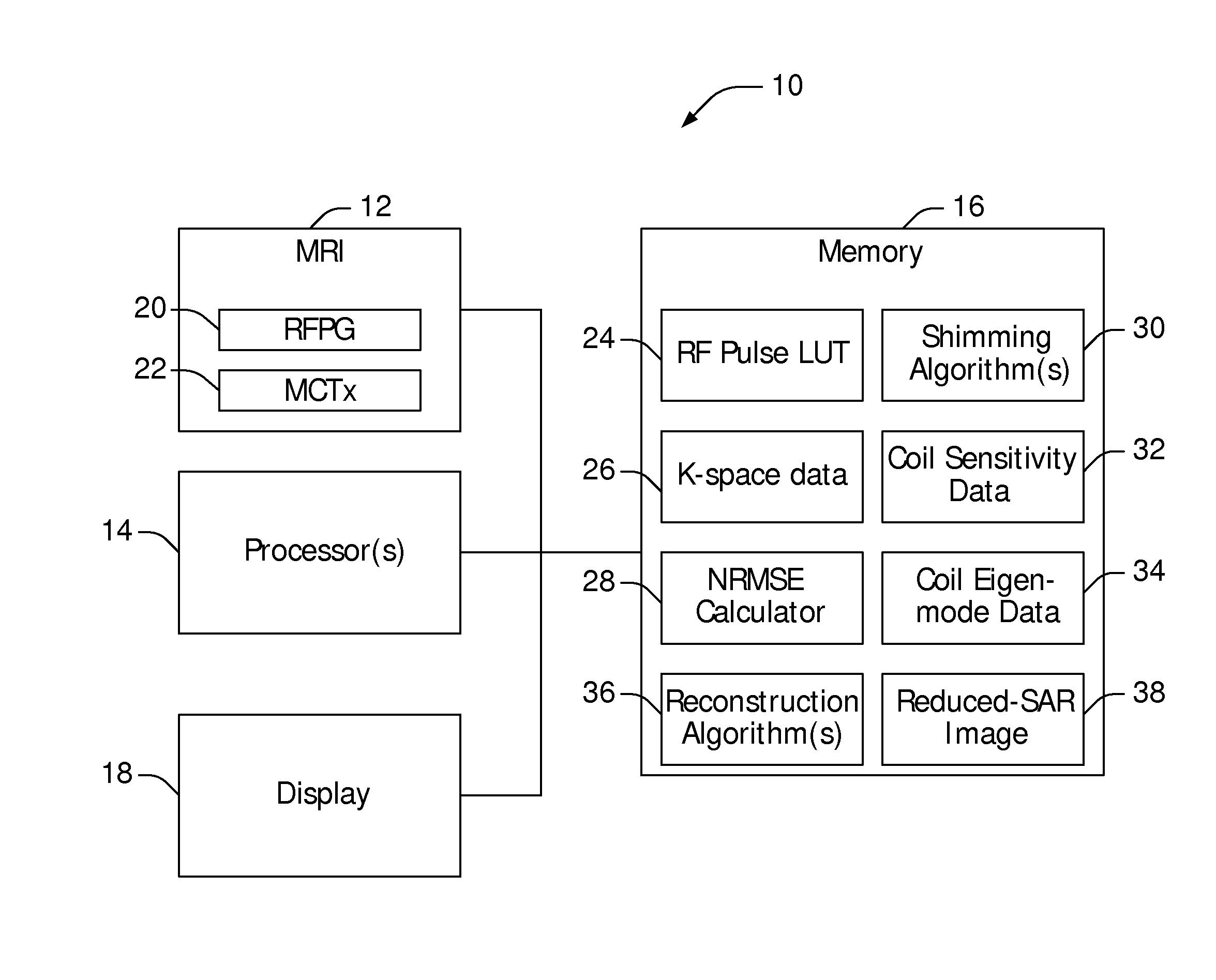SAR reduction in parallel transmission by k-space dependent RF pulse selection
a technology of k-space dependent rf pulse selection and parallel transmission, which is applied in the field of magnetic resonance imaging (mri) systems, can solve the problems of serious problems such as sar limitation, especially at high fields, and achieve the effect of reducing the total sar for the entire scan and improving image quality
- Summary
- Abstract
- Description
- Claims
- Application Information
AI Technical Summary
Benefits of technology
Problems solved by technology
Method used
Image
Examples
Embodiment Construction
[0018]FIG. 1 illustrates a system 10 that facilitates reducing SAR in multi-transmit MRI devices by varying RF pulses during an acquisition scan as a function of k-space location. For example, RF pulses are designed with a preselected spatial definition. Pulses with higher spatial definition give more accurate images, but have a higher SAR. By using RF pulses with the standard spatial definition for the sequence in some regions of k-space and a reduced spatial definition in others, the overall SAR for the sequence is reduced. For instance, higher spatial definition pulses are used in the low frequency portions of k-space and lower spatial definition pulses are used in the high frequency regions of k-space, but also other assignments are possible. Particularly in MR scanners with multiple independently operated RF transmitters, there is more flexibility to design B1 shimming pulses. This flexibility is employed by the described systems and methods to adjust also the B1 shimming in ac...
PUM
 Login to View More
Login to View More Abstract
Description
Claims
Application Information
 Login to View More
Login to View More - R&D
- Intellectual Property
- Life Sciences
- Materials
- Tech Scout
- Unparalleled Data Quality
- Higher Quality Content
- 60% Fewer Hallucinations
Browse by: Latest US Patents, China's latest patents, Technical Efficacy Thesaurus, Application Domain, Technology Topic, Popular Technical Reports.
© 2025 PatSnap. All rights reserved.Legal|Privacy policy|Modern Slavery Act Transparency Statement|Sitemap|About US| Contact US: help@patsnap.com



